Background
Strength and endurance are not normally associated with one another when developing training protocols. A strength athlete is thought of as someone who can lift heavy weights in a gym, while an endurance athlete is known for a high aerobic capacity. If you’ve read the StrongFirst article “The Kettlebell Mile” by Dr. Mike Prevost or attended a Strong EnduranceTM seminar by Pavel, you will have learned that you can indeed train strength and endurance simultaneously.
Since leaving the world of metabolic conditioning (metcons) a few years ago, my training has been strength focused. Three days a week I train the military press, pullups, and pistol squats. I am also following a strong endurance protocol from Pavel’s book The Quick and the Dead. I find this to be an effective blend of strength and endurance. However, as backpacking season approached, I wanted to find a kettlebell protocol that got me outside and required me to carry weight. When “The Kettlebell Mile” popped into my inbox, I decided to give it a try.
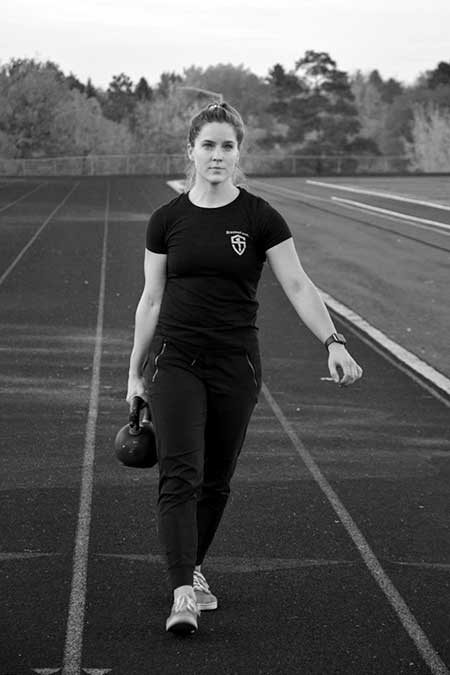
Training Plan
According to the article, once a week you are to complete a mile of single-arm farmer carry using a kettlebell that is 20-30% of your body weight. In the beginning you can build up to this distance, walking or running. The purpose is to build strength and aerobic capacity in one event. In early June, I added the Kettlebell Mile to my training program. Below is a table of what my weekly training plan looks like with the Kettlebell Mile included, which is alternated between Tuesday and Thursday each week.
For my first mile, I used a 12kg kettlebell which is about 18% of my bodyweight. Dr. Prevost writes that anything less than 20% of your bodyweight would probably feel too easy. I found this to be true. I completed the mile in 12.5 minutes without much effort and felt that I could have gone faster.
For the second mile, I used a 16kg kettlebell which is about 25% of my bodyweight, within the recommended weight range. It was harder and I had to walk some of it, but it felt just right. I finished with a time of 15.5 minutes with an average heart rate of 170 bpm (beats per minute). This was not ideal as it was over my max aerobic heart rate of 150 bpm, but now I had data to work with. (I calculated my max aerobic heart rate using the MAF 180-Formula developed by Dr. Philip Maffetone which has the user subtract their age from 180. I chose this because it does not require laboratory testing, is still relatively personalized, and is a simple formula anyone can apply to training.) For the remainder of the summer, I used a 16kg kettlebell focusing on maintaining a smooth gait and switching hands less often. Sometimes I approached the Kettlebell Mile as a test and other days as training. About every third week, I would see how fast I could go, but for most sessions I tried to maintain a steady pace, watch my heart rate, and finish feeling strong.
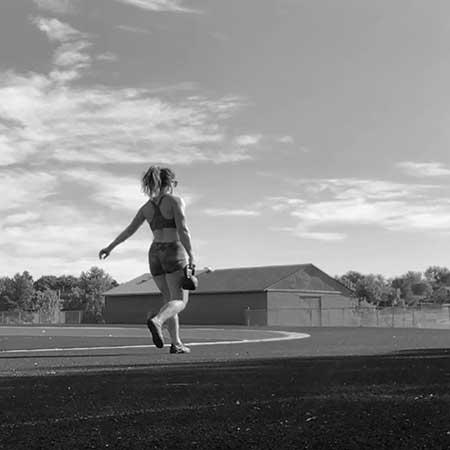
My heart rate averaged around 155 to 160 bpm during training sessions. As summer continued not only did my heart rate fall more in the range of my max, but I continued to complete the mile faster. By the end of July, I could average 13 minutes within the 155-160 bpm range. On my last test at the end of August, I ran the mile in 11:33 with an average heart rate of 175 bpm. Although this was higher than 150 bpm, I was pleased to see my time decrease significantly with a similar heart rate to my first mile with the 16kg kettlebell. Again, this was a test not a training session. As I continue to train the Kettlebell Mile, my goal remains to keep an aerobic heart rate while decreasing my time.
Results
After nine weeks of the Kettlebell Mile, I backpacked the Great Sand Dunes in southern Colorado. I was carrying a 14kg pack which is about 20% of my bodyweight. This was my second time backpacking the dunes to get away from the crowds and spend a night in the sand. As much as I was anticipating the destination, I was dreading the hike. Hiking in sand is like taking two steps for every one as your feet continually sink down. Great Sand Dunes National Park is roughly 8,000 feet above sea level and the highest dune is a 742-foot climb. Needless to say, it is not a walk in the park. Although you only have to hike a mile and a half to clear the highest dunes and set up camp, it usually takes over an hour. When I completed this hike two years ago, I was dedicated to metcons and remember having to stop midway on each dune gasping for air. It took me about an hour and a half to clear the high dunes.
However, I was pleasantly surprised at how strong and powerful I felt as I scaled the dunes this August. My heart rate ranged between 150-155 bpm. Not only did my heart rate stay aerobic, it only took about ten seconds for my heart rate to fall well below 150 bpm when I stopped at the top of a dune. I felt strong and my breathing was even. I took less rest, enjoyed the hike more, and still had energy left when we set up camp. Due to my steady pace, this time I was able to clear the high dunes in an hour and twelve minutes.
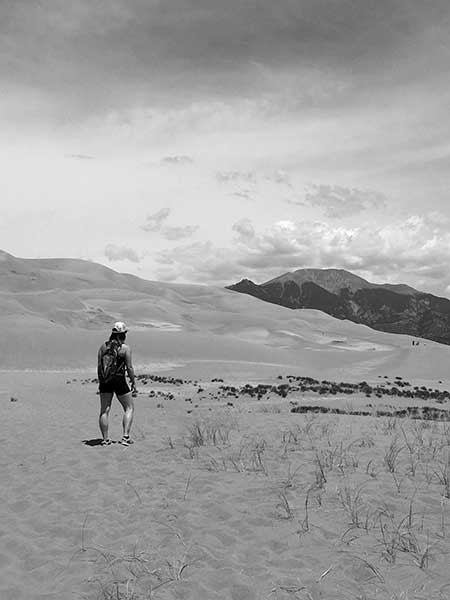
Make Your Plan
If you’re interested in trying out the Kettlebell Mile, read “The Kettlebell Mile” and then plan a day once a week to complete the mile. Start with a kettlebell that is about 20% of your bodyweight. If it feels too easy, go up in weight but don’t surpass 30%. Work on maintaining an even pace, aerobic heart rate, and control of your breath. You do not have to run or cover a whole mile right away. You can begin by walking, watching your heart rate, and observing the stop signals of uneven breath or change in body position. You are not trying to go fast, but you will go faster as you build strength and endurance. You perform how you train, so train your body to move well. If you are someone who loves the outdoors or treks long distances for your profession, complete the Kettlebell Mile regularly and your ability to carry heavy weight long distances will increase and dare I say, become enjoyable.
Build an amazing capacity for adventure
All-Terrain Conditioning™ Course
in person or online
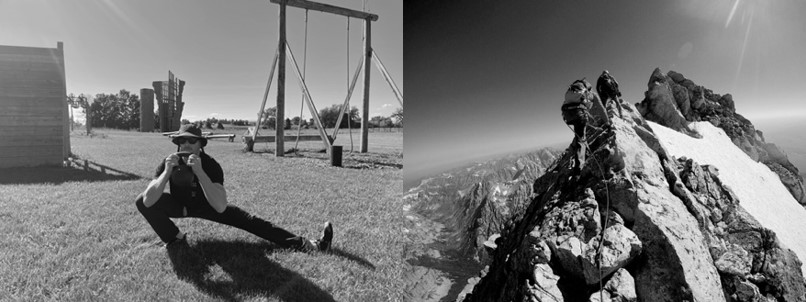
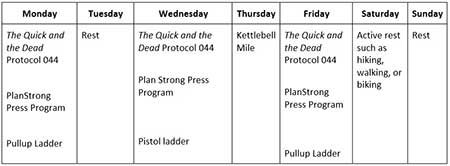


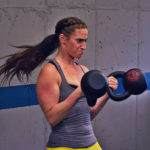



Great article! Thank you for sharing the details with us.
Nice article Abbey. Great work.
Strong work Abbey!
Thanks for sharing your training plan!
Abbey, now I know why you made us do this in September. Nice! I’m going to incorporate it into my fasting walks in the morning (1-mile). Cheers – Pierre
Hi, how often do you change kettle bell to other hand when walking?
Abbey – Thanks for the great article and report!
I’m wondering if you noticed improvements in hip stability, core development, changes to run gait, or saw strength changes to grip, forearms, shoulders, stabilizers, or other anything else.
Also, any thoughts on whether the task get easier as you progressed (due to aerobic/strength adaptations) even though you were able to speed up; or did you feel the difficulty was stable/maintained through increasing intensity via speed? Thanks!
I have been doing rucking for an hour with a kettlebell in my rucksack, at a similar weight. Would that have the same effect I wonder? Works out to about 4.5 miles in the hour.
It may have some similar carry over, but according to the article “The Kettlebell Mile” the specific length of a mile seems to be the perfect distance where strength and aerobic power are both important. A longer distance favors more aerobic power and endurance. I have also found a mile is a distance that I can push myself during a test day and still have something “left in the tank,” where as I wouldn’t be able to do that for 4.5 miles. By incorporating the kettlebell mile, you would probably improve your hour rucks as well.
I didn’t talk about this in my article, but there is also benefit in carrying the kettlebell in your hand. It improves hip stability and run gait. It also requires a lot from your trunk because you have to fight to maintain an upright position with an uneven load.
Awesome article ..thank you Abbey for sharing.
Your dedication is truly inspiring!!!
💪💪💪
Thank you. You should give it a try! 🙂